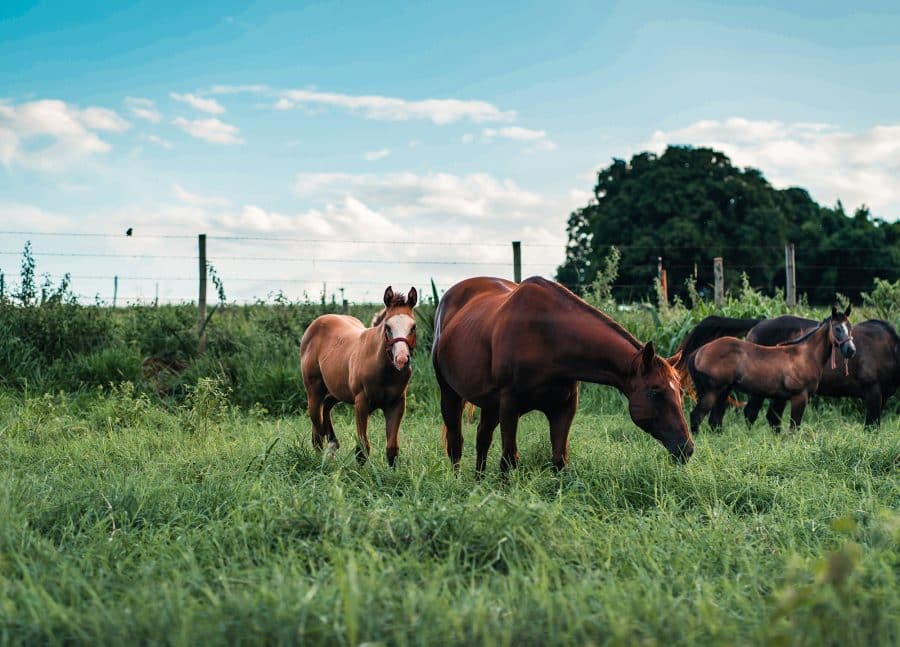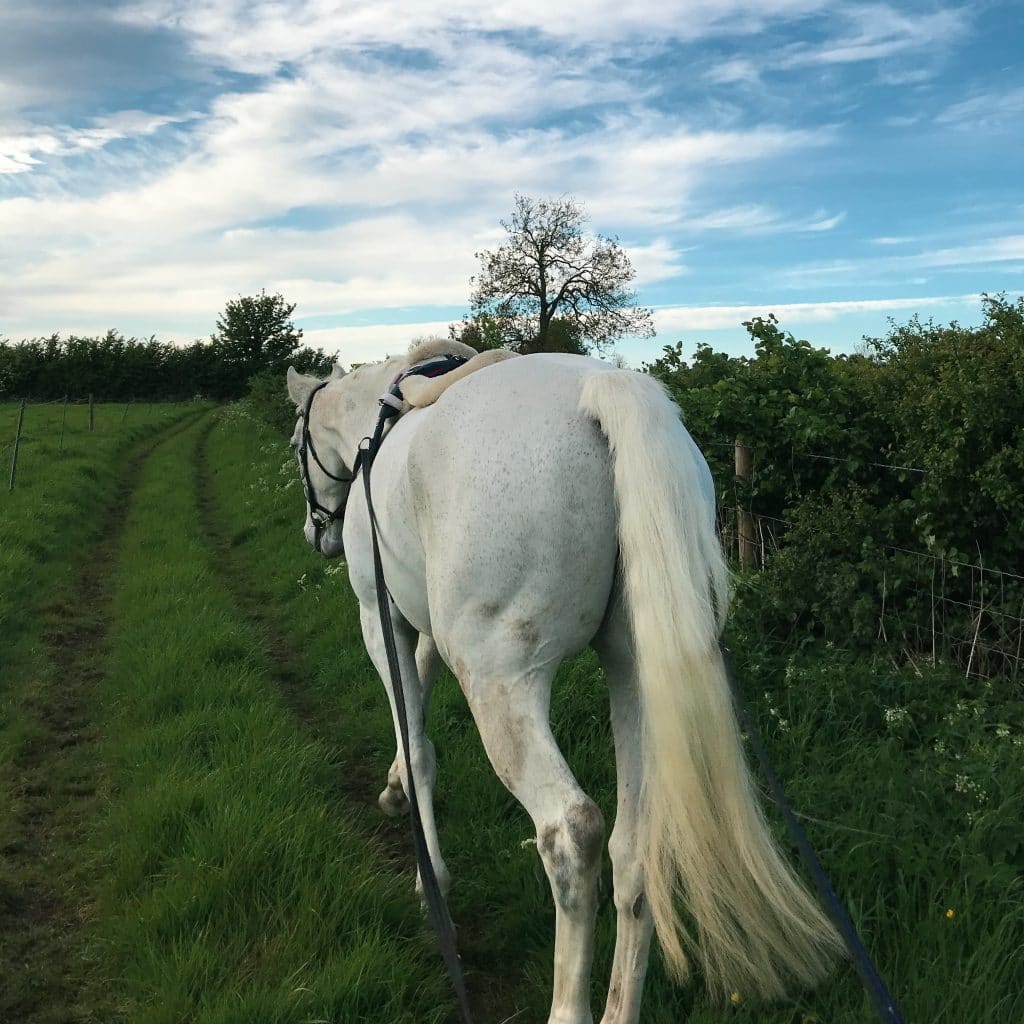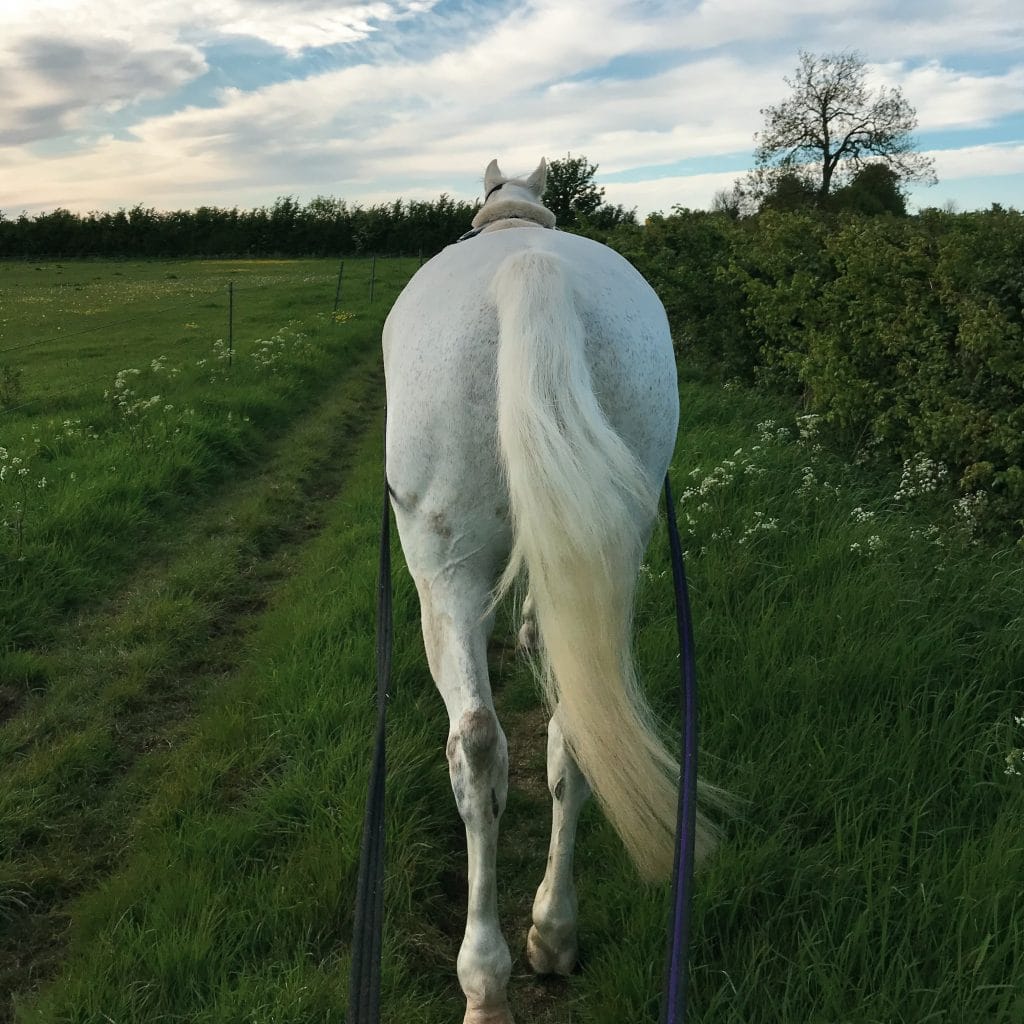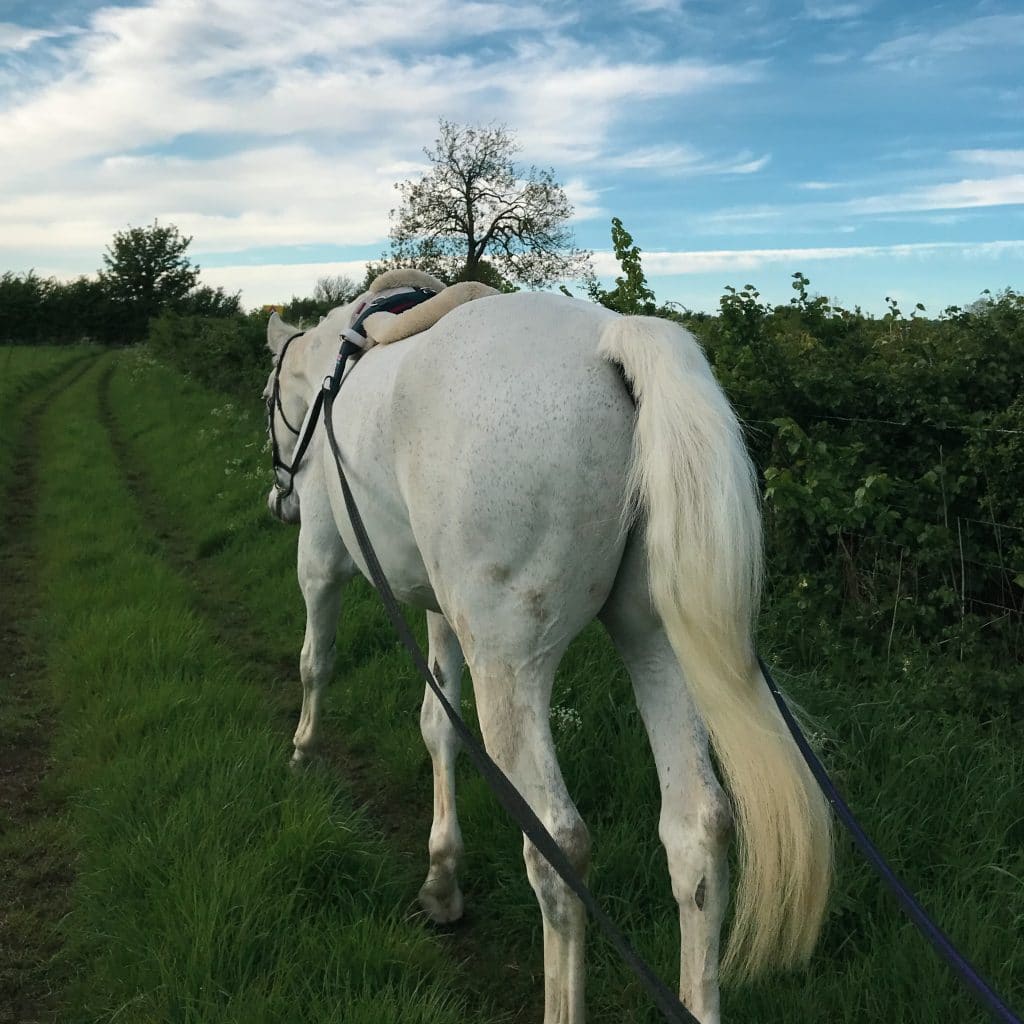A Beginner’s Guide to Long Reining
‘Long reining’ or ‘long lining’ your horse can be very beneficial. I first heard about long reining from my horse’s physio who suggested using it…

‘Long reining’ or ‘long lining’ your horse can be very beneficial. I first heard about long reining from my horse’s physio who suggested using it as part of a weekly routine to build up core and backend muscles. The idea of long reining my fresh, 17hh, warmblood Archie filled me with dread, however, over time we’ve both learnt to love it and it’s great to look back and see that all of the hard work has paid off. I’m going to share my step-by-step guide on how to long rein a horse, and introducing long reining to your weekly exercise routine.
Benefits
You’ve probably heard of long reining before – it’s often recommended by vets and physios alike. Alongside its rehabilitation benefits there are lots of reasons to include long reining in your weekly routine.
Youngsters.
Long reining is an excellent way of building up confidence in a young horse that expects you to be by their side when they’re working. As you progress to backing a horse it’s important to get them used to you not being in sight – this helps to reduce anxiety when you begin riding your hoofed friend.Long reining is also a great way to introduce lateral work to your horse before asking them to do it under saddle.
Nappy horses.
Long reigning helps to build a nappy horse’s confidence. By bringing the outside rein slightly across the body and walking to the side you can build familiarity with your horse walking out by themselves, whilst remaining in their peripheral vision.Reduce strain on your horse’s legs.
Compared to lunging long reining places much less stress on your horse’s legs and body as you’re not required to constantly work in a circle, and you can change rein much more readily.Assist with polework.
Long reining is a great way to carry out polework without being mounted. It allows your horse to fully engage their core and lift up, helping to build muscles across their backend – great for ridden work. If you’re looking for a polework routine to try out, check out our recent polework exercises for lockdown article.Improve rider fitness.
Rather than riding your horse on that strenuous hill work session you’d planned, join in. Removing the weight of a rider on a horses back helps to engage back muscles, such as the longissimus dorsi. By following your horse you can also build up your own fitness in areas you might not typically develop when riding – a win win situation!Analysis.
If you rarely see your horse ridden by someone else then it can be challenging to determine how your horse actually moves. The increased distance between you and your horse afforded by longlining will give you a vantage point where you can determine areas for development in your horses movement. For example, you might discover that your horse isn’t tracking up correctly, or that their muscles aren’t working evenly (from behind), etc.What you need
- Bridle
- Roller (if you don’t have one you can just use your saddle)
- Saddle pad to go underneath the roller for padding
- Two lunge lines, ideally two different colours so that you can readily distinguish between left and right
- Riding hat and gloves
Steps
#1: Voice Commands.
It’s important that your horse knows the voice command for stop and walk on. This can be achieved in a couple of ways, but I think the best way is by having your horse in hand, and asking them to stop by issuing the command ‘woah’, followed by a scratch or treat when they respond correctly. I issue a couple of vocal clicks when I want my horse to walk on, followed by a reward. A good time to practice is on the way to and from the paddock. Vocal commands are a fundamental part of long reining, and you should not move on to step 2 until you’re confident in the effectiveness of your commands.#2: Familiarity.
Once you’ve aced stopping and starting it’s time to familiarise your horse with having lunge lines around it’s backend. Some horses are particular sensitive around their backend, so it’s important to build up your horses confidence slowly. A great way of desensitising your horse is to rub both lines along the body, continuing until you feel confident enough to throw loose lines around the backend – I carried this out over the course of two weeks. As no two horses are the same you may need less, or more time – read the situation and act accordingly!#3: Begin Long Reining.
Attach both lines to the roller and the bit. Once this is done bundle up one line and pass it over the horse’s body so that it is on the same side as the opposite line. Next, begin to walk around as if you were lunging your horse using the inside rein, all the while holding the outside rein over its body.For safety reasons I recommend you try this (and #4) in an indoor school with a friend present, just in case something unexpected happens.
#4: Moving reins.
Once you’re confident your horse is comfortable being long reined with both reins on one side, start to bring the crossed rein back across the horse’s body so that one rein is to your horse’s left, and the other to their right. You should now be in the long reining position. Now start practising starting, stopping, and steering.#5: You’ve got it!.
If you’ve cracked steering and stopping then keep on going; try introducing poles or begin reining outside. If things aren’t going as well as you’d hoped then keep practising – it’ll pay off eventually!I hope that you’ve found this article useful, and that it encourages you to give long reining a go. Keep an eye out on the Eventing Guide Youtube channel for a step-by-step video on this in the next few weeks.



3 Replies to “A Beginner’s Guide to Long Reining”